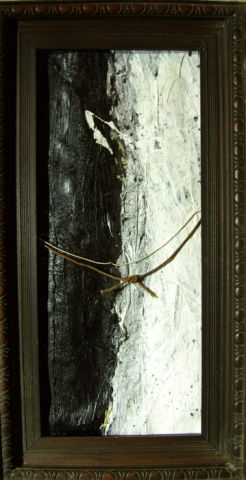I reviewed DYSTOPIA, the new exhibition at CAPC, http://www.capc-bordeaux.fr/programme/dystopia in Bordeaux last week for Whitehot, (David R., if you are keeping tally – my first paid work). You should be able to find the review here http://whitehotmagazine.com/new next week.
The exhibition premise was an interesting one. The curator Alexis Vaillant invited American art theoretician and Sci Fi writer, Mark von Schlegell, to write a screenplay which would govern the exhibition preparation. Von Schelgell had final say in choosing all the works and Vaillant curated the show.
What I perceived from looking at the works and the exhibition as a whole was that the artworks were chosen to fit a theme rather than a theme illuminating the artworks. In other words, the works of art seemed to come second in importance to the theme. The primary thing that came across was the telling of the story of DYSTOPIA. In fact, the exhibition catalogue is von Schlegell’s latest novel, New Dystopia. He actually refers to many of the works in the show within this novel without describing them in a factual or actual way like most catalogues do. He instead, uses the artwork as a descriptive illustration for a scene or a setting within the story. Here is an example: “Despite its totalitarian scale, the structure was not what Calve would have expected adorning a New Dystopia under the enlightened guidance of the master artisan. It had a geometrical quality that tied it to the October revolution, to the Greeks, as well as a baudy spontaneity that was one part decadence. Its image was so expressive of engineering paradox, its hips so curiously dynamic, that it was not at all suitable for the sort of stragecraft Joralsky would have in mind. It was simply wrong for the current Dystopia, inexpressive of Type 1 possibility altogether.” The image is from the DYSTOPIA exhibition and is descriptive of this quoted passage from the novel-cum-exhibition catalogue.
This in effect takes importance away from artist and artwork as supreme (photograph title, by such and such artist, date, dimensions etc.) and places it within a larger framework (this photographic series, by artist, illustrates the ambient light and degraded environment within the setting of my story). I found it stimulating and exciting to think of art placed on a level playing field with other forms of cultural production. But I wondered if other artists would share that view.
For well over a century, art production has been closely tied to the artist’s ego and the creation of the artistic persona. I wonder if we are ready to share the stage with other modes of cultural production which would make art a ‘prop’ within a greater theme. I’m not questioning a comparison between the popularity of say, art exhibitions, films, concerts or theatre, for example. Or even the mixture of art and design within the creation of a theatrical or dance production. All of that is well established. What I’m questioning is the possibility for art, within the realm of art exhibitions, to let in other modes of cultural production; like with DYSTOPIA, a writer telling a story that is explored and illustrated within the context of an art exhibition. The context for the story is the art and the context for the art is the story. It seems an exciting thing to me.
But what happens if an artist is misrepresented? I mean, not just a mistaken understanding of an artist’s intent but an actual misuse of an artist’s work. Do we even consider that our work can be misused? I dare say we all would be so pleased to have our work chosen for an exhibition, we probably wouldn’t mind how it was used. But should we?
How would you feel to no longer be ‘the artist’ but the ‘creator of this work’…

